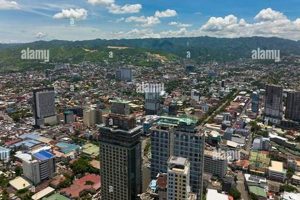The term “demolish skyscraper” refers to the deliberate destruction of a high-rise building. It typically involves a controlled implosion or mechanical dismantling, and is often necessary for reasons such as urban redevelopment, safety concerns, or structural instability.
Demolishing skyscrapers presents unique challenges due to their size, complexity, and potential impact on the surrounding environment. Careful planning, engineering expertise, and safety precautions are crucial to ensure successful and responsible demolition.
Despite the challenges, the demolition of skyscrapers can offer several benefits. It allows for the redevelopment of valuable urban land, the removal of unsafe or outdated structures, and the creation of new opportunities for growth and innovation.
1. Planning
When it comes to demolishing skyscrapers, meticulous planning is essential to minimize risks and ensure a smooth demolition process. This planning involves a comprehensive assessment of the building’s structure, surrounding environment, and potential hazards.
- Risk Assessment
Thorough risk assessment identifies potential hazards and vulnerabilities in the building’s structure, surrounding environment, and demolition methods. This assessment helps determine the safest and most effective demolition plan.
- Structural Analysis
Structural analysis is crucial to understand the building’s load-bearing capacity, stability, and potential failure points. This analysis guides the design of the demolition plan and ensures the safety of the surrounding structures.
- Contingency Planning
Unforeseen circumstances can arise during demolition. Contingency planning outlines alternative demolition methods and safety protocols to address potential challenges and ensure a smooth operation.
- Stakeholder Coordination
Effective coordination among engineers, contractors, safety personnel, and other stakeholders is essential to ensure a synchronized and safe demolition process.
By engaging in meticulous planning, professionals can minimize risks, enhance safety, and ensure the successful demolition of skyscrapers, paving the way for urban redevelopment and new construction projects.
2. Engineering
In the context of skyscraper demolition, structural engineers play a pivotal role in ensuring the safety and success of the operation. Their expertise is crucial in various aspects:
- Structural Assessment
Structural engineers assess the building’s structural integrity, identifying load-bearing elements, potential failure points, and vulnerabilities. This assessment forms the basis for developing a safe and effective demolition plan.
- Demolition Plan Design
Based on their assessment, structural engineers design a detailed demolition plan that outlines the sequence of demolition, placement of explosives or cutting points, and measures to ensure the stability of surrounding structures.
- Risk Mitigation
Structural engineers identify potential risks associated with the demolition, such as flying debris, dust, and vibrations. They develop strategies to mitigate these risks and ensure the safety of workers and the public.
- Monitoring and Control
During the demolition, structural engineers monitor the building’s response and adjust the demolition plan as needed to ensure the safety and stability of the surrounding structures.
The involvement of structural engineers is essential to ensure the safe and controlled demolition of skyscrapers, minimizing risks to workers, the public, and the environment.
3. Safety
Ensuring safety is paramount when demolishing skyscrapers. Stringent safety measures are implemented to protect workers, the public, and the environment during the demolition process:
- Worker Safety: Workers involved in skyscraper demolition face numerous hazards, including falling debris, exposure to hazardous materials, and structural collapse. Safety measures such as protective gear, proper training, and strict adherence to safety protocols are essential to minimize risks.
- Public Safety: Skyscraper demolition can impact the surrounding area, posing potential risks to the public. Safety measures such as exclusion zones, traffic control, and public notifications are implemented to ensure public safety.
- Environmental Protection: Demolition activities can generate dust, noise, and hazardous materials, which can negatively impact the environment. Environmental safety measures, such as dust suppression systems, noise control, and proper waste management, are crucial to minimize the environmental impact.
The implementation of stringent safety measures is not only a legal requirement but also a moral and ethical responsibility. By prioritizing safety, demolition professionals can minimize risks, protect human lives, and preserve the environment during skyscraper demolition.
Skyscraper demolition is a complex and hazardous undertaking, and safety must be at the forefront of every operation. Stringent safety measures are essential to ensure the well-being of workers, the public, and the environment, ultimately contributing to the successful and responsible demolition of skyscrapers.
4. Implosion
Controlled implosion is a widely used technique for demolishing tall buildings, particularly skyscrapers. It involves the carefully planned and executed detonation of strategically placed explosives within the building’s structural supports. The precise timing and sequencing of these explosions cause the building to collapse inward upon itself, minimizing the risk of damage to surrounding structures and the environment.
The implosion technique is often preferred for demolishing skyscrapers due to its efficiency, precision, and safety. By carefully calculating the placement and timing of the explosives, engineers can direct the building’s collapse in a controlled manner, reducing the risk of uncontrolled collapse and flying debris. This level of control also allows for greater protection of surrounding buildings and infrastructure.
Implosion is not without its challenges, however. The planning and execution of a successful implosion require a high level of expertise and coordination am
ong engineers, demolition specialists, and safety personnel. Additionally, the use of explosives in urban environments requires strict adherence to safety protocols and careful consideration of the potential impact on nearby structures and the public.
In conclusion, controlled implosion is a highly effective and precise method for demolishing skyscrapers, providing a safer and more controlled alternative to traditional demolition techniques. Its use requires meticulous planning, engineering expertise, and strict safety measures to ensure a successful and responsible demolition process.
5. Mechanical dismantling
Mechanical dismantling is an alternative method to implosion for demolishing skyscrapers. It involves the careful and controlled removal of structural components using heavy machinery, such as cranes, excavators, and wrecking balls.
- Controlled Demolition
Mechanical dismantling provides greater control over the demolition process, minimizing the risk of unintended damage to surrounding structures and the environment. - Selective Removal
This method allows for the selective removal of specific building sections, making it suitable for partial demolition or the removal of hazardous materials. - Recycling and Salvage
Mechanical dismantling facilitates the recovery of valuable materials, such as steel, concrete, and glass, for recycling and reuse in other construction projects. - Safety and Precision
Advanced machinery and techniques enhance safety by reducing the need for workers to operate in hazardous areas. It also enables precise dismantling, minimizing the risk of structural collapse.
Mechanical dismantling is a viable option when implosion is not feasible due to factors such as proximity to sensitive structures, environmental concerns, or the need for selective demolition. It offers a controlled, safe, and sustainable approach to demolishing skyscrapers.
6. Debris management
Demolishing skyscrapers generates a significant amount of debris, which must be managed properly to minimize environmental impact and ensure public safety. Effective debris management involves various facets:
- Waste Segregation
Debris is segregated into different categories, such as metal, concrete, glass, and hazardous materials. This segregation facilitates recycling and appropriate disposal methods, reducing landfill waste and promoting sustainable practices.
- Recycling and Reuse
Recyclable materials, such as steel, aluminum, and concrete, are recovered and processed for reuse in other construction projects. This reduces the demand for virgin materials and promotes a circular economy.
- Safe Disposal
Hazardous materials, such as asbestos and lead, are safely removed and disposed of in accordance with environmental regulations. Proper disposal prevents these materials from contaminating the environment and posing health risks.
- Dust and Noise Control
Demolition activities can generate significant dust and noise. Proper management involves implementing dust suppression measures and minimizing noise pollution through controlled demolition techniques and noise barriers.
Effective debris management during skyscraper demolition is crucial for protecting the environment, conserving resources, and ensuring the health and safety of the public. It aligns with the principles of sustainable construction and responsible waste management practices, contributing to a greener and healthier urban environment.
7. Redevelopment
The demolition of skyscrapers is often a necessary step in urban redevelopment, creating opportunities for new construction projects, revitalization of urban areas, and economic growth. This connection between demolition and redevelopment highlights several key aspects:
- Land Repurposing
Demolition frees up valuable land in densely populated urban areas, making it available for new development projects. This can include the construction of residential buildings, commercial complexes, or public spaces, contributing to urban renewal and growth.
- Urban Renewal
Skyscraper demolition can be part of broader urban renewal initiatives aimed at revitalizing aging or declining urban areas. By removing outdated or structurally unsound buildings, cities can make way for modern, sustainable, and vibrant neighborhoods that attract residents, businesses, and investment.
- Economic Opportunities
Redevelopment projects following skyscraper demolition often bring significant economic benefits. New construction projects create jobs in various sectors, including construction, design, and real estate. Additionally, the presence of modern and attractive buildings can boost local businesses and tourism, stimulating economic growth in the area.
- Sustainable Development
The demolition of older skyscrapers can present an opportunity to construct new buildings that meet higher environmental standards and incorporate sustainable design principles. This can contribute to reducing energy consumption, promoting green building practices, and creating more sustainable and livable urban environments.
In conclusion, the demolition of skyscrapers is often a catalyst for urban redevelopment, creating new opportunities for growth, innovation, and sustainable development. By repurposing land, revitalizing urban areas, stimulating economic activity, and promoting sustainable practices, skyscraper demolition plays a crucial role in shaping the future of modern cities.
8. Legacy
The demolition of iconic skyscrapers is not merely a physical act; it can also have a profound impact on the city’s skyline and historical narrative. These structures often become symbols of a city’s identity, and their removal can trigger a reevaluation of the city’s past, present, and future.
- Transforming the Skyline
Skyscrapers are often defining features of a city’s skyline, shaping its overall character and identity. Their demolition can dramatically alter the cityscape, creating a sense of loss or disorientation among residents and visitors alike. The absence of a familiar landmark can also disrupt the city’s visual rhythm and harmony.
- Erasing History
Iconic skyscrapers often have historical significance, serving as witnesses to key events or embodying architectural styles that reflect the city’s past. Their demolition can result in the erasure of valuable historical artifacts and the loss of tangible connections to the city’s heritage. This can create a sense of cultural amnesia and diminish the city’s sense of place.
- Challenging Identity
S
kyscrapers can become symbols of a city’s aspirations, power, and economic vitality. Their demolition can challenge the city’s self-perception and raise questions about its future direction. The removal of an iconic skyscraper can trigger debates about the city’s identity, its architectural legacy, and the balance between progress and preservation. - Creating Opportunities
While the demolition of iconic skyscrapers can be a loss, it can also present opportunities for urban renewal and revitalization. The removal of outdated or structurally unsound buildings can make way for new developments that better meet the needs of the city’s residents and businesses. The demolition of a skyscraper can also create new public spaces or green areas, enhancing the city’s livability and sustainability.
In conclusion, the demolition of iconic skyscrapers is a complex and multifaceted issue that can have a significant impact on the city’s skyline, historical narrative, and sense of identity. It is important to carefully consider the potential consequences of such actions and to engage in a thoughtful public discourse that balances the need for progress with the preservation of the city’s architectural and cultural heritage.
Demolish Skyscraper FAQs
The demolition of skyscrapers is a complex and often controversial topic. Here are answers to some frequently asked questions:
Question 1: Why are skyscrapers demolished?
Skyscrapers are demolished for various reasons, including urban redevelopment, safety concerns, structural instability, and economic factors. Outdated or inefficient buildings may be demolished to make way for new developments that better meet the needs of the city.
Question 2: How are skyscrapers demolished?
Skyscrapers can be demolished using various methods, including controlled implosion, mechanical dismantling, and a combination of techniques. The choice of method depends on factors such as the building’s height, structural integrity, and proximity to surrounding structures.
Question 3: Is skyscraper demolition safe?
Skyscraper demolition is a highly regulated and controlled process that prioritizes safety. Meticulous planning, engineering expertise, and stringent safety measures are employed to minimize risks to workers, the public, and the environment.
Question 4: What are the environmental impacts of skyscraper demolition?
Skyscraper demolition can generate significant amounts of debris, dust, and noise. Proper waste management practices, dust suppression techniques, and noise control measures are implemented to reduce the environmental impact and protect the health and safety of the public.
Question 5: What is the legacy of demolishing skyscrapers?
The demolition of iconic skyscrapers can have a profound impact on a city’s skyline and historical narrative. It can challenge the city’s self-perception and raise questions about its future direction. However, demolition can also create opportunities for urban renewal and revitalization, making way for new developments that meet the evolving needs of the city.
Question 6: How can the public participate in the decision-making process for skyscraper demolition?
Public participation is crucial in the decision-making process for skyscraper demolition. Open discussions, public hearings, and transparent communication channels allow citizens to voice their concerns, share their perspectives, and influence the decision-making process.
In conclusion, the demolition of skyscrapers is a complex and multifaceted issue with various implications. By addressing common concerns, promoting transparency, and engaging in thoughtful public discourse, we can ensure that skyscraper demolition is carried out responsibly, with due consideration for safety, environmental impact, historical significance, and the city’s future development.
Transition to the next article section:
Skyscraper Demolition Tips
Demolishing skyscrapers is a complex and hazardous undertaking that requires meticulous planning, engineering expertise, and stringent safety measures. Here are some key tips to ensure a successful and responsible demolition process:
Tip 1: Prioritize Safety
Safety should be the top priority throughout the demolition process. Implement comprehensive safety protocols, including proper training for workers, use of protective gear, and establishment of exclusion zones for the public.
Tip 2: Conduct Thorough Planning
Meticulous planning is crucial to minimize risks and ensure a smooth demolition. Conduct thorough risk assessments, structural analysis, and contingency planning to address potential challenges and ensure the stability of surrounding structures.
Tip 3: Engage Structural Engineers
Involve experienced structural engineers in the planning and execution of the demolition. Their expertise is essential for assessing structural integrity, designing the demolition plan, and mitigating potential risks.
Tip 4: Choose the Appropriate Demolition Method
Select the most suitable demolition method based on the building’s characteristics and surrounding environment. Controlled implosion and mechanical dismantling are common techniques, each with its own advantages and considerations.
Tip 5: Implement Effective Debris Management
Proper debris management is vital to minimize environmental impact and ensure public safety. Implement a comprehensive plan for waste segregation, recycling, and safe disposal of hazardous materials.
Tip 6: Consider the Historical Significance
Recognize the potential historical significance of the skyscraper and explore options for preserving or commemorating its legacy. Engage with local heritage organizations and the public to gather input and make informed decisions.
By adhering to these tips, demolition professionals can enhance safety, minimize risks, protect the environment, and ensure the successful demolition of skyscrapers, paving the way for urban redevelopment and new construction projects.
Conclusion: Skyscraper demolition is a complex and multidisciplinary endeavor that requires careful planning, engineering expertise, and a commitment to safety. By incorporating these best practices, demolition professionals can effectively manage the challenges and complexities of demolishing skyscrapers, contributing to the sustainable development of urban environments.
Conclusion
The demolition of skyscrapers is a multifaceted undertaking that involves careful planning, engineering expertise, safety considerations, and environmental responsibility. Through controlled implosion, mechanical dismantling, and other techniques, skyscrapers are brought down to make way for urban redevelopment, address safety concerns, or facilitate the construction of new and sustainable structures.
The decision to demolish a skyscraper should be made with careful consideration of its historical significance, potential impact on the surrounding environment, and the safety of workers and the public. By adopting best practices and adhering to strict safety protocols, demolition professionals can ensure that skyscraper demolition is carried out responsibly, minimizing risks and contributing to the sustainable development of urban environments.







